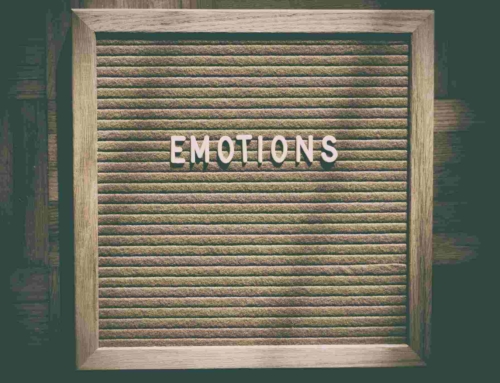When you feel depressed, anxious, or wonder whether you possibly have one or more psychological disorders, do you ever think, “How do I find out what is wrong? What is my diagnosis? What if it is more than just one diagnosis? How does my therapist or clinician arrive at a correct diagnosis?”
 When you come to counseling with your problem(s), we as clinicians assess your symptoms to form a diagnosis. Sometimes, the criteria are quite clear. For example, most clients know when they feel depressed or anxious, or when they have experienced significant trauma.
When you come to counseling with your problem(s), we as clinicians assess your symptoms to form a diagnosis. Sometimes, the criteria are quite clear. For example, most clients know when they feel depressed or anxious, or when they have experienced significant trauma.
Other diagnoses, however, require more testing to rule out other possible disorders so that a client is not misdiagnosed. There are psychometric tests that clinicians can use to determine a more specific diagnosis to pinpoint which disorder is the primary one, as well as its impact on your daily functioning.
If you say you are depressed but you are still able to get up, shower, make your bed, and do your normal daily tasks, then you are not going to be diagnosed with major depressive disorder unless further symptoms reveal or indicate it. If, on the other hand, you say you are depressed and anxious, and that your anxiety is so bad that you cannot leave the house, then your therapist is going to first screen for anxiety and social phobia.
Where and how do we start? When you first come in to see a new therapist, you will be presented with a professional disclosure (also known as an informed consent) that delineates the type of therapy treatment they provide.
After that, you will be given an initial assessment in which you describe your presenting problem – in other words, why you are seeking therapy. Depending upon your answer, your therapist will determine whether further testing is necessary.
Common Psychological Disorders
Listed below are some common psychological disorders and screening tests that help clarify criteria for a diagnosis or rule-out psychological disorders you do not have.
Depression
Two tests for depression are the PHQ-9 (Patient Health Questionnaire-9) and BDI-II (Beck Depression Inventory). The PHQ-9 is used more frequently due to accessibility and easy scoring that can be completed with the client present.
 The PHQ-9 is a self-reporting 9-question survey that utilizes DSM-5 (Diagnostic and Statistical Manual of Mental Disorders – 5th ed.) criteria to screen for depression, including its severity, frequency, and impact on daily functioning. The PHQ-9 questions utilize a Likert scale rating for which the answers include: “Not at all,” “Several days,” “More than half the days,” and “Nearly every day.”
The PHQ-9 is a self-reporting 9-question survey that utilizes DSM-5 (Diagnostic and Statistical Manual of Mental Disorders – 5th ed.) criteria to screen for depression, including its severity, frequency, and impact on daily functioning. The PHQ-9 questions utilize a Likert scale rating for which the answers include: “Not at all,” “Several days,” “More than half the days,” and “Nearly every day.”
If you present with depressive symptoms in your first session, the PHQ-9 screen helps your therapist to have an overview of how these symptoms impact your life and your daily functioning. The PHQ-9 only takes two to three minutes to complete and score, so your therapist can do this every session or every other session to monitor any changes in symptoms to support your mental health recovery.
The BDI-II is a 21-question self-reporting questionnaire that measures the severity of depressive symptoms. Although some psychometric tests can be found online, the BDI-II is administered in a clinical setting.
Anxiety
The GAD-7 (Generalized Anxiety Disorder-7) is a 7-question self-reporting screen for generalized anxiety disorder, as well as social phobia and panic disorder. Like the PHQ-9, the GAD-7’s scoring is based on the frequency of your symptoms and includes “Not at all,” “Several days,” “More than half the days,” and “Nearly every day.”
Like the PHQ-9, the GAD-7 only takes a couple of minutes and can be administered at the beginning of each session to monitor any change in symptoms, preferably improvement of symptom management with continued therapy.
Trauma and PTSD
 The PCL-5 (Posttraumatic Stress Disorder Checklist) is a 20-question self-reporting screen based on the DSM-5 that indicates and monitors current symptom criteria for PTSD in addition to any new symptoms that you may incur throughout your treatment.
The PCL-5 (Posttraumatic Stress Disorder Checklist) is a 20-question self-reporting screen based on the DSM-5 that indicates and monitors current symptom criteria for PTSD in addition to any new symptoms that you may incur throughout your treatment.
Like the PHQ-9 and GAD-7, the PCL-5 scoring is based on a Likert scale. The PCL-5 has scores that range in 0 to 4 points for each symptom; these include: “Not at all,” “A little bit,” “Moderately, “Quite a bit,” and “Extremely.” The PCL-5 is typically done during the first session if you present with trauma or PTSD.
Adverse Childhood Experiences
Studies by the CDC have shown that adverse childhood experiences have a significant impact on adult daily functioning. There are different ACE screenings for pediatrics (children ages 0 to 19) and adults (20 and over). These tests examine abuse, neglect, and household dysfunction (unstable home environments).
The test includes multiple questions across these categories, and scoring determines which specific adverse childhood experiences have been “identified” (occurred) or “de-identified” (did not occur). Once the screening and scoring are complete, your therapist can then determine whether or not to initiate a trauma treatment plan that helps to heal the wounds from these adverse childhood experiences so that they do not continue to impact your daily functioning.
One treatment used is exposure therapy. For example, if you were attacked at a bus stop by a bully as a child, and you are now unable to ride the bus as an adult as a result of the trauma from that attack, your therapist may gradually expose you to the bus stop and even go with you on a bus ride.
Behavioral Health Disorders
The GAIN-SS (Short Screener) is used to determine more severe behavioral mental health disorders. This brief screening tool is used in clinical settings to help identify psychiatric disorders, criminal or violent behaviors, and whether substance use should be screened further and added as a dual diagnosis for the client.
The screen lists attitudes and behaviors and is then scored on a Likert scale that measures behaviors that occurred in the “Past month,” “2 to 12 months ago,” 1+ years ago,” or “Never.” Although the GAIN-SS does not screen for specific disorders, it gives the clinician insight into behavioral problems and patterns, such as disruptive or impulsive behaviors, that can be further assessed using DSM-5 criteria for specific behavioral disorders and/or behaviors that meet criteria for other psychological disorders.
Bipolar Disorder
 Although there is no one specific screen that determines whether you have Bipolar disorder, your clinician will discuss symptoms you incur to decide if they meet diagnostic criteria. These will include episodes and mood disturbances. Both Bipolar I and II include depression.
Although there is no one specific screen that determines whether you have Bipolar disorder, your clinician will discuss symptoms you incur to decide if they meet diagnostic criteria. These will include episodes and mood disturbances. Both Bipolar I and II include depression.
Your primary care physician can also run medical tests to rule out a medical condition. The difference between the two is that Bipolar I is indicated by manic episodes, whereas Bipolar II has fewer hypomanic episodes.
One screen that assists with this is the MDQ (Mood Order Questionnaire). This self-reporting screen is scored through “Yes” and “No” answers that reflect moods and behaviors including hyperactivity, irritability, arguments, self-confidence, racing thoughts, energy levels, social activity, pressured speech, libido, and spending habits. This screening is not conclusive and cannot provide a diagnosis of Bipolar I or II in and of itself.
Substance Use
SBIRT (Screening, Brief Intervention, and Referral to Treatment) is an evidenced-based screening test that identifies risky behaviors associated with substance use using standardized measurements for both males and females. The screen assesses for alcohol, drugs and alcohol, and Fetal Alcohol Spectrum Disorder.
This screen allows the clinician to provide immediate intervention in the session by identifying risky behaviors, providing feedback, engaging the client, and making a referral for appropriate treatment. The treatment can include referrals to intensive outpatient care (IOP), inpatient, and/or 12-step groups.
Other Psychological Disorders
Although there are many diagnostic screens available for specific disorders, clinicians use the DSM-5 to identify criteria matching your symptoms and presenting problems. It is the primary source for identifying criteria to form the principal diagnosis for your presenting problem. Your therapist will also consider biopsychosocial and contextual factors that relate to your problem when forming a diagnosis.
Your therapist will initiate screenings as needed based upon your presenting problems to provide you with a safe recovery environment in which to do your therapy. In faith-based counseling, this alliance will include you, the therapist, and Christ: “…A cord of three strands is not quickly broken” (Eccl. 4:12).
This therapeutic relationship will help you establish the necessary interventions to employ when you are outside the therapy session and that address your specific presenting problems.
“Writing”, Courtesy of Ben Mullins, Unsplash.com, CC0 License; “Reflection”, Courtesy of Tiago Bandeira, Unsplash.com, CC0 License; “Overwhelmed”, Courtesy of Nik Shuliahin, Unsplash.com, CC0 License; “Looking Out the Window”, Courtesy of Alec Douglas, Unsplash.com, CC0 License









